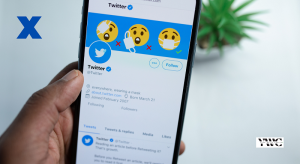Storytelling is one of the most powerful tools in marketing, especially when it’s done right. It’s not just about selling a product or service—it’s about connecting on a deeper level with your audience.
Instead of simply telling people what you offer, you’re inviting them into a world where your brand stands for something meaningful. Your product isn’t just another item on a shelf; it’s a solution to their problems, a way to improve their lives, or even a symbol of something they believe in.
When done well, storytelling transforms your brand from just another business into something your audience can relate to, something they feel a part of. It’s about creating a bond that goes beyond the simple transaction of buying and selling. It’s about fostering loyalty, where customers choose you not just because of what you sell, but because of what you represent to them.
But here’s the catch: while the idea of storytelling in marketing sounds straightforward, it’s surprisingly easy to get it wrong. Many brands stumble when trying to weave storytelling into their marketing campaigns, falling prey to common pitfalls that can turn a potentially compelling story into a marketing flop.
So, let’s dive into seven common mistakes brands make with storytelling in marketing and, more importantly, how you can avoid them.
Common Storytelling Mistakes and How to Avoid Them
1. Being Too Salesy
Imagine you’re at a party, engrossed in a fascinating conversation with someone new. Suddenly, they whip out a brochure and launch into a sales pitch about their multi-level marketing scheme. You’d probably feel a bit…violated, wouldn’t you?
The same principle applies to storytelling in marketing. Your audience wants to be entertained, informed, and inspired, not bombarded with a hard sell. If your story feels like a thinly veiled attempt to push a product, you might lose their trust and interest.
2. Lack of Authenticity
Authenticity is the cornerstone of effective storytelling. Consumers crave genuine connections with brands they can relate to. Stories that feel generic, inauthentic, or disconnected from your brand’s values, will fall flat.
Think about a well-publicized campaign where a global corporation is trying to tell a story about environmental sustainability, but their practices contradict this message. The audience will see through the façade and mentally check out.
A more authentic approach could involve acknowledging past mistakes and showing the steps taken to improve, fostering a genuine connection.
Instead of wasting time with inauthentic storytelling, share real stories about real people whose lives have been impacted by your brand.
3. Ignoring Your Audience: The “Me, Myself, and I” Syndrome
Storytelling is about connection, not self-promotion. If your stories are solely focused on your brand’s achievements and accolades, you’re missing the point. Your audience wants to see how your brand fits into their lives, solves their problems, and fulfills their desires.
Take the time to understand your target audience’s pain points, aspirations, and values. Craft stories that speak directly to their experiences and emotions. Remember, it’s not about you; it’s about them.
4. Not Measuring Results
Storytelling, like any marketing strategy, requires measurement and analysis. You need to know the impact your stories are having on your target audience, to avoid “flying blind.” How can you tell if your marketing stories are resonating with your audience? Are they driving engagement, generating leads, or boosting sales?
You should utilize a mix of quantitative and qualitative metrics to gauge the effectiveness of your storytelling. Track website traffic, social media engagement, conversion rates, and customer feedback. These insights will help you refine your strategy and create even more impactful stories.
5. Overcomplicating the Message
While a good story needs conflict and resolution, it shouldn’t be so complex that your audience gets lost in the plot. You know what? If your marketing story is overly complicated, with too many characters, subplots, or confusing timelines, your audience will struggle to follow along. They’ll get lost in the maze of information, their attention will fade out, and they’ll ultimately miss the core message you’re trying to convey.
Keep your stories simple, focused, and easy to digest. If possible, focus on a single protagonist, a clear conflict, and a satisfying resolution. Use concise language, vivid imagery, and a logical flow to guide your audience through the narrative. Remember, clarity is key!
6. Inconsistency
Your brand’s storytelling should be woven into a cohesive narrative that reflects your values and mission. If your messaging is inconsistent across different channels or campaigns, you risk confusing your audience and diluting your brand identity.
Think of your brand as a character in a long-running TV series. Each episode (or marketing campaign) should contribute to the overall story arc, revealing new dimensions of the character while staying true to their core personality.
7. Neglecting the Call to Action (CTA)
A great story leaves the audience wanting more. But it also needs a clear call to action to guide them on the next step of their journey. Whether it’s visiting your website, signing up for a newsletter, or making a purchase, your story should inspire action.
Never leave your audience hanging, wondering “What next?” Provide a clear and compelling call to action that aligns with the narrative and encourages them to take the next step in their relationship with your brand.
By avoiding these common storytelling mistakes, you can create marketing campaigns that resonate with your audience, build brand loyalty, and drive sales.
I’m Debbie, “Your Write Choice.” I offer content marketing and ghostwriting services that connects and converts, editing par excellence and peace of mind for my clients. Hire my services.
Download my free storytelling for sales workbook.
Enroll in my “Master Storytelling for Sales Course.”












